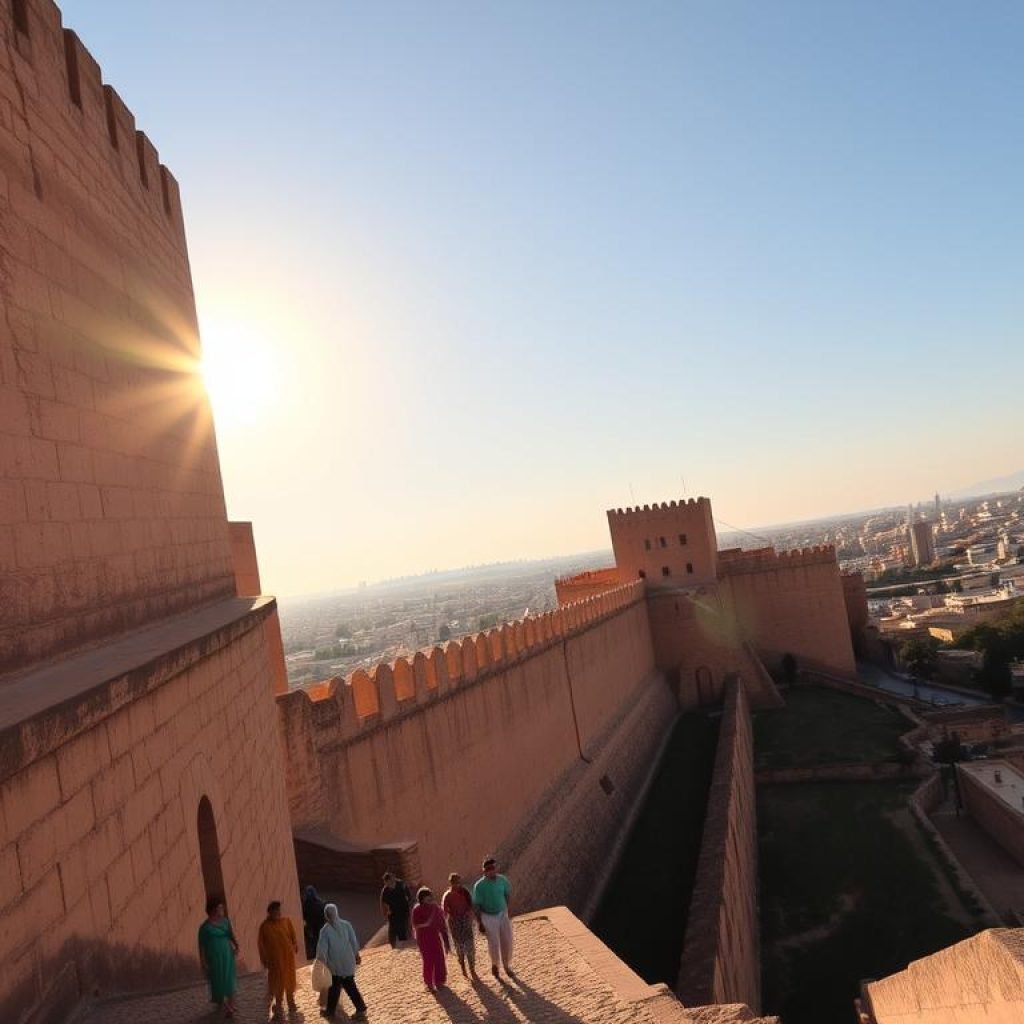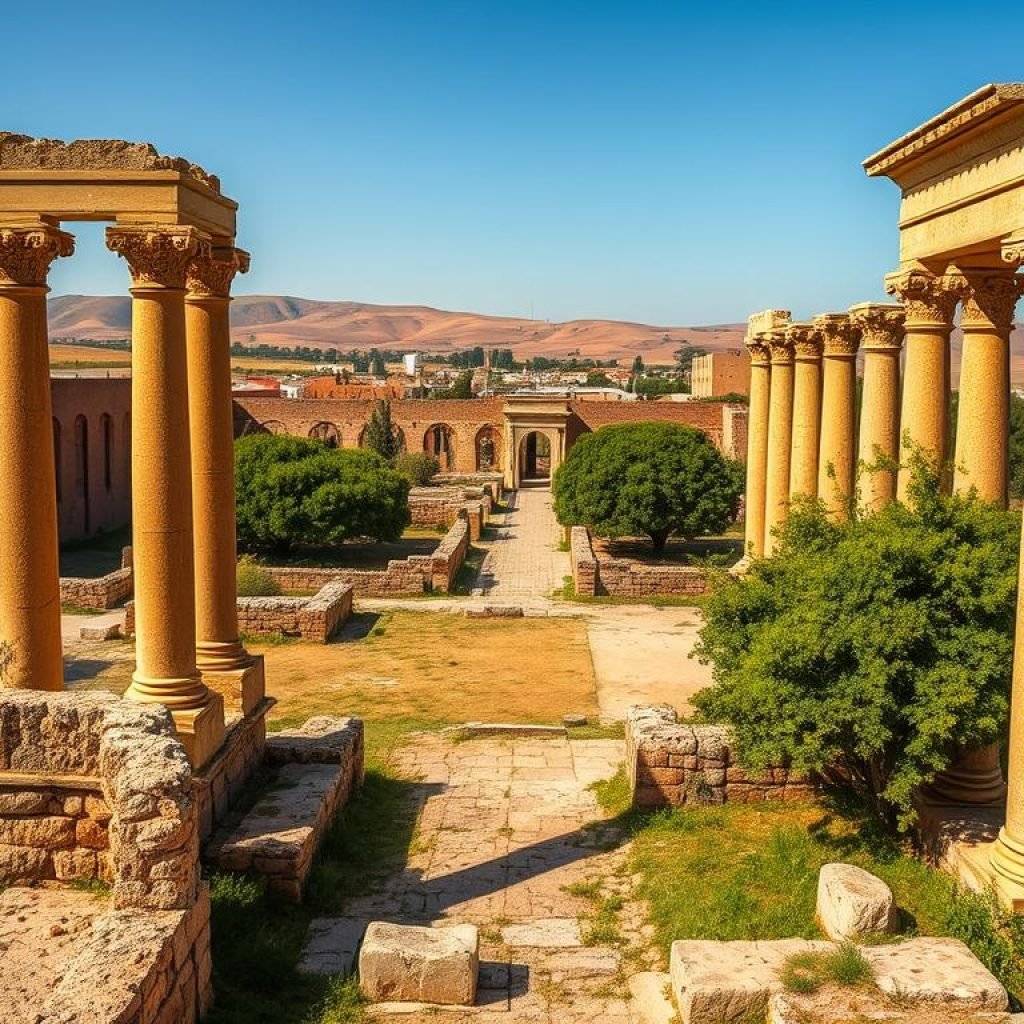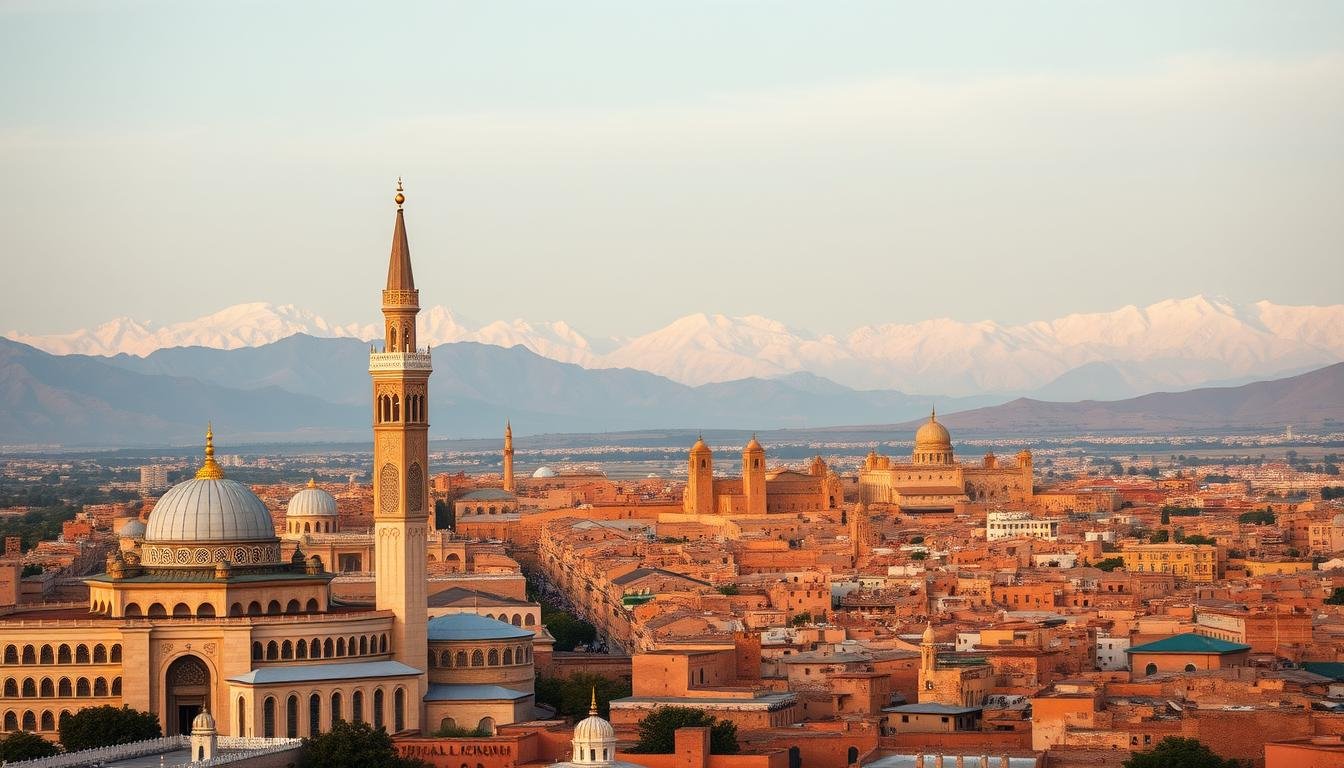What makes Morocco’s UNESCO sites so special? Morocco boasts 9 UNESCO World Heritage Sites, like the Medina of Fez and Ksar of Ait-Ben-Haddou. These places offer a deep dive into Morocco’s rich culture and history. From ancient Volubilis to the lively Medina of Marrakesh, they show Morocco’s mix of Arab, Berber, and French influences.
Exploring these sites is a fascinating journey. You can discover more about Morocco’s UNESCO treasures at Morocco UNESCO World Heritage sites.
Key Takeaways
- Morocco has a total of 9 UNESCO World Heritage Sites, each with its own unique cultural and historical significance.
- The first site, Medina of Fez, was inscribed in 1981, while the most recent site, Rabat, was added in 2012.
- UNESCO sites in Morocco, such as the Medina of Marrakesh, are classified under multiple UNESCO criteria, highlighting their importance.
- Moroccan UNESCO sites, including the Ksar of Ait-Ben-Haddou, offer a glimpse into the country’s rich cultural heritage.
- Visitors can explore Morocco’s UNESCO World Heritage sites, such as the Archaeological Site of Volubilis, to learn more about the country’s history and culture.
- Morocco’s UNESCO sites are a must-visit destination for anyone interested in learning about the country’s unique blend of Arab, Berber, and French influences.
- By visiting Morocco’s UNESCO sites, you can support the preservation of these important cultural and historical landmarks.
Introduction to UNESCO Sites in Morocco
Morocco boasts a wide variety of Morocco cultural heritage sites. Each site has its own rich history and importance. The country’s location at the intersection of Africa, Europe, and the Middle East has made it a key spot for cultural exchange and trade for ages. With nine UNESCO World Heritage Sites, Morocco is a treasure trove of historical landmarks and cultural treasures.
The UNESCO World Heritage Convention was set up in 1972. It aims to protect and preserve cultural and natural heritage worldwide. Morocco joined in 1975 and now has nine UNESCO World Heritage Sites, including the Medina of Marrakesh and the Ksar of Ait-Ben-Haddou. These sites show the country’s complex and fascinating history, influenced by Arab, Berber, and French cultures.
Some of the notable Morocco historical landmarks include:
- Medina of Fez, designated as a World Heritage Site in 1981
- Medina of Marrakesh, designated in 1985
- Ksar of Ait-Ben-Haddou, designated in 1987
- Historic City of Meknes, designated in 1996
- Archaeological Site of Volubilis, designated in 1997
These sites are not just important for their history. They also have cultural and economic value. They draw millions of tourists each year, boosting revenue and creating jobs for locals. Keeping these sites preserved is key to protecting Morocco’s cultural heritage and supporting sustainable tourism.
Historic City of Meknes
The Historic City of Meknes is a UNESCO World Heritage Site. It shows the rich history and architecture of Morocco. Founded in the 11th century, Meknes was Morocco’s capital during the Alaouite dynasty. It has a mix of Moroccan UNESCO architecture.
The city’s well-preserved historic center gives a peek into Morocco’s past. It highlights the country’s importance in UNESCO Fez Morocco.
Meknes is famous for its extensive wall, stretching 45 km with 20 gates. The Bab Mansur gate is a highlight. The city has over 50 palaces from the 17th century. Visitors can wander the narrow streets and alleys, enjoying the vibrant atmosphere and rich cultural heritage.
Architectural Highlights
Meknes boasts impressive architectural landmarks. The Mausoleum of Moulay Ismail and the Madrasa Bou Inania are notable. The city’s historic granary shows its agricultural past. Its architecture, blending Moroccan and Islamic styles, is a must-see for those interested in UNESCO Fez Morocco and Moroccan UNESCO architecture.

Key Historical Events
Meknes has a long history, starting as an Almoravid military base in the 11th century. It became the capital of the Alawi dynasty in the 17th century. Sultan Moulay Ismail built it into a lavish palace complex. Today, visitors can explore the historic center and learn about its role in Moroccan history, tied to UNESCO Fez Morocco and its cultural heritage.
Medina of Fes
The Medina of Fes is a fascinating destination that offers a glimpse into Morocco’s rich cultural heritage. It is one of the oldest and most well-preserved medieval cities in the world. It’s a must-visit for anyone interested in Morocco UNESCO tourism. The city is home to many historical landmarks, including the famous Al-Attarine Madrasa and the Dar Batha Museum.
Visitors can explore the city’s narrow streets and alleys. They can take in the vibrant atmosphere and rich cultural heritage of this ancient city. From the unique artisan craftsmanship to the delicious culinary delights, Fes has something for everyone. As a World Heritage site in Morocco, the Medina of Fes shows the country’s rich history and cultural significance.
Some of the key attractions in the Medina of Fes include:
- The University of Al-Karaouine, the world’s oldest university
- The Al-Attarine Madrasa, a stunning example of Islamic architecture
- The Dar Batha Museum, showcasing traditional Moroccan arts and crafts
The Medina of Fes is a unique and fascinating destination. It offers a glimpse into Morocco’s rich cultural heritage. With its narrow streets, historic landmarks, and vibrant atmosphere, it’s a must-visit for anyone interested in Morocco UNESCO tourism and World Heritage sites in Morocco.
Ksar of Ait-Ben-Haddou
The Ksar of Ait-Ben-Haddou is a famous fortified village in Morocco. It’s a key example of UNESCO sites in Morocco. Located near Ouarzazate, it has been a UNESCO World Heritage Site since 1987. It’s a top spot for those interested in Moroccan history and architecture.
The village has narrow streets and alleys with traditional adobe buildings. It’s been a filming location for movies like Game of Thrones and Gladiator. Visitors can explore the village and enjoy its vibrant atmosphere and rich cultural heritage.
The Ksar of Ait-Ben-Haddou keeps its architectural authenticity. The local people mainly make a living from agriculture and tourism. It’s a major attraction for those interested in exploring its history and cultural significance.
Archaeological Site of Volubilis
The Archaeological Site of Volubilis is a fascinating destination that shows Morocco’s rich culture. It’s one of the most important Moroccan UNESCO sites. Founded in the 3rd century BC, it was a key trade center during the Roman Empire.
Located near Meknes, Volubilis is a historical gem. It has well-preserved Roman ruins and beautiful landscapes. You can see landmarks like the Arch of Caracalla and the Basilica of Volubilis, showing Roman influence in Morocco.

At Volubilis, you can see many ruins, including over 50 villas. The site’s walls, built by Marcus Aurelius, stretch for 2.6 km. It’s a top tourist spot, attracting many with its history and culture.
Some key facts about Volubilis include:
- Founded: 3rd century BC
- Abandoned: 11th century AD
- Area covered by the city: Approximately 42 hectares (100 acres)
- Estimated population at its peak: Around 20,000 inhabitants
Volubilis is a key part of Morocco’s culture. Its UNESCO World Heritage Site status in 1997 highlights its importance. It’s a must-see for anyone interested in Moroccan UNESCO sites and Morocco’s cultural heritage.
Medina of Essaouira
The Medina of Essaouira is a UNESCO World Heritage Site. It’s a mix of coastal beauty and history. Located 190 km from Marrakech, it was Morocco’s main port for 100 years. Its well-kept landmarks show its rich culture, making it perfect for history buffs.
Essaouira is famous for its arts scene. It has many galleries and festivals all year. The Gnawa music festival in June is a highlight, featuring jazz, rock, and world music. Walking its narrow streets, you’ll feel the city’s lively culture. It’s close to Marrakech, making it a great day trip for tourists.
Some top spots in Essaouira include:
- The historic port, with its blue fishing boats
- The ramparts, offering stunning views of the city and sea
- The medina, with its wide streets and easy layout
Conclusion: The Importance of Preservation
Exploring Morocco’s UNESCO World Heritage sites shows us how vital preservation is. These sites give us a peek into Morocco’s rich history. They connect us to the traditions and values that have shaped Morocco over centuries.
Travelers can help protect these sites by respecting local customs and supporting local communities. By doing so, they promote sustainable tourism. This way, they help keep Morocco’s UNESCO sites alive for future generations.
When planning your trip to Morocco’s UNESCO sites, remember your actions matter. Your choices can impact the preservation of these sites. By valuing the past and choosing sustainable options, you help protect these cultural treasures. This ensures they continue to inspire and captivate people today and tomorrow.




Comment (0)